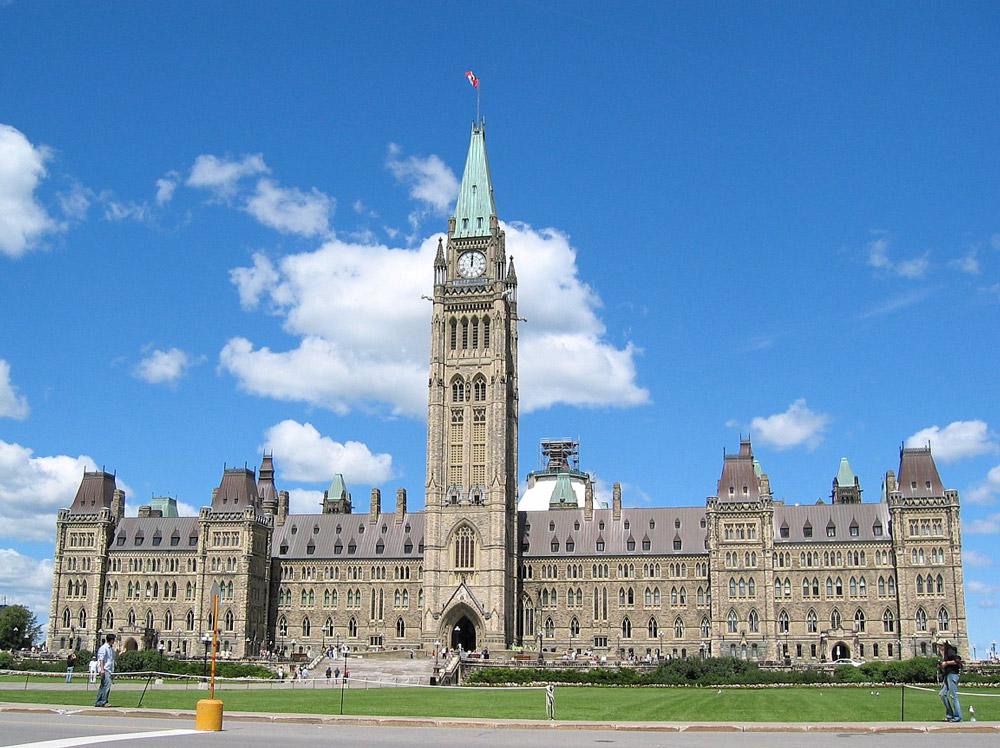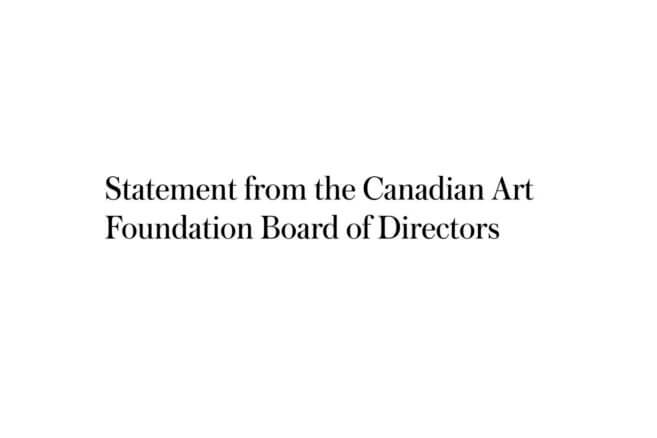National Government Shifts
Mélanie Joly is out as Canadian Heritage Minister, and Pablo Rodriguez is in. The announcement was made Wednesday morning as part of a wider cabinet shuffle. Joly is now minister of tourism, official languages and la francophonie. Like Joly, Rodriguez is a Montreal-area MP. But he his trilingual rather than bilingual, having fled at the age of eight with his family from Argentina to Canada. He has also been a member of the Standing Committee on Canadian Heritage, and heritage critic when the Liberals were in opposition. (CBC, Wikipedia)
Many read Joly’s shift as a demotion linked to the failure of her Creative Canada strategy last fall. “The file that caused her the most damage, and likely cost her her job, was last year’s agreement with Netflix,” the National Post contends. “The government framed it as a good deal that would see the streaming service invest $500 million over five years in Canadian productions. But there was no guaranteed funding for French-language content, and in Quebec there were widespread calls for a tax on Netflix to level the playing field for homegrown broadcasters and producers.” (National Post)
The new Heritage Minister Rodriguez has many challenges to face. As Canadian Heritage Minister, Rodriguez is linked to crown corporations such as the National Gallery of Canada, the Canadian Museum of History and the National Capital Commission. “The NCC file brings immediate challenges. Among them: It’s looking for a new boss to replace current CEO Mark Kristmanson,” says the Ottawa Citizen. “It is also facing questions about how best to (finally) develop LeBreton Flats. And it has decaying infrastructure on several fronts. The walls of 24 Sussex Drive are crumbling, and the Office of the Auditor General found that the NCC has a “significant deficiency” in asset maintenance.” (Ottawa Citizen)
Or, as some put it, “taking on the culture file, Rodriguez is left to clean up Joly’s mess.” That’s the headline on a Globe and Mail column on the matter. “It was her Tory predecessor who warned Mélanie Joly about the political dangers of her cultural policy review,” the Globe states. “Asked to comment when the Liberal minister of Canadian heritage launched the review two years ago, former Conservative minister James Moore pointed to the difficulty of balancing public expectations of ever-more consumer choice with cultural industry demands for subsidies and regulations. He didn’t add that cynical political calculation was the reason Stephen Harper’s government had simply allowed the file to languish, but today, as Ms. Joly finds herself demoted to a trio of minor portfolios—tourism, official languages and la francophonie – Mr. Moore’s observation looks prescient.” (Globe and Mail)
Inuit Art Changes
Iqaluit gallerist becomes first Inuk to be able to issue trademarks for Inuit-made art. “Lori Idlout, the owner of Iqaluit’s Carvings Nunavut, has become the first Inuk to be able to issue the Igloo Tag Trademark for Inuit-made art, the Inuit Art Foundation announced late last week,” the CBC reports. “The Igloo Tag Trademark is used to certify that a piece of art is Inuit-made. Carvings Nunavut becomes the first new licensee of the tag in 45 years—and the seventh active one. It’s also the first new licensee to sign an agreement since the Inuit Art Foundation was given control of the trademark from the federal government last year.” (CBC)
Exhibitions have been announced for the launch of the Kenojuak Cultural Centre in Cape Dorset. Named after revered artist Kenojuak Ashevak (1927–2013) and due to open in September, the $3-million centre will be the new home of Kinngait Studios, one of Canada’s most prominent Inuit art production centres. A community gathering on September 5 will help launch two exhibitions: one, the largest survey yet of Ashevak’s work in the Canadian Arctic, and the other a look at carving in Inuit art. (press release)
Art and Artists Abroad
Annie Pootoogook’s art is a highlight of the Liverpool Biennial, a UK critic writes. “At Tate Liverpool, where the Biennial fills the ground floor and a suite of fourth floor galleries, the drawings of Inuit artist Annie Pootoogook stand out,” says the Guardian’s critic. “Nothing else at the Tate Liverpool section of the Biennial can match the directness and acuity of Pootoogook’s drawings.” (The Guardian)
Abbas Akhavan’s installation at the Liverpool Biennial is also notable. “First shown in a different iteration at Museum Villa Stuck in Munich in 2017, for this installation Akhavan displaced seven-and-a-half tons of soil into the the gallery space and over ten days, carefully compressed it with water and built it into the shape of the feet of a fallen monument to reference the destruction of ancient sculptures by ISIS,” Yaniya Lee writes in Canadian Art. “Viewers can smell the earth as they enter the space. The work’s largeness in the smallness of the space allotted for display mirrors the ways cultural histories are often ravaged or cut down to accommodate ruling regimes. After the biennial, the soil for the sculpture will be donated to local gardens.” (Canadian Art)
And the just-opened, much-buzzed Front Triennial in Cleveland has some Canadians involved. Montreal-born, New York–based artist Chris Dorland is showing Sun Scraper, “an online image archive that scrapes data from 38 news and consumer websites from around the world,” appending it with visitor data. Two Toronto artists are showing: Alan Belcher with his ceramic versions of JPEG icons, and Scott Treleaven with sculptural work. Paintings by Paris-based Canadian Paul P. are included, too, as are installations by UVic alum Jessica Stockholder. (press releases, Front Triennial)
Art and Mental Health
CAMH’s first artist researcher is exhibiting his work. Edmonton-based multidisciplinary artist and researcher Brad Necyk is exploring “ideas of medication regimes, psychiatry, and the narratives that form around and within these systems. Over the past five years, Necyk’s work has focused in on patient experience—whether that of his own or others—and representations of mental illness and trauma.” His exhibition opens July 19 at Double Happiness Projects in Toronto. (Double Happiness Projects)
Art doesn’t always have to heal the mad artist, and other thoughts from a recent symposium. Artist, researcher and lecturer in disability studies Jenna Reid reflects on the symposium #BigFeels: Creating Space for Mental Health in the Arts. (Canadian Art)
Art Market News
The Art Toronto exhibitors’ list has been released. Canada’s international fair for modern and contemporary art returns for its 19th annual edition presenting 102 exhibitors from 7 countries and 28 cities. The Focus section this year is on California, while gallerists new to the fair include Montreal’s Projet Pangée, San Francisco’s Hosfelt Gallery and Dusseldorf’s Golestani, among others. (Art Toronto)
And some commercial galleries are on the move in Toronto. Mainstay Nicholas Metivier Gallery opens a new space on the east side of the city’s downtown on July 19. Meanwhile, New York Taglialatella Galleries has just opened its first Canadian location in Yorkville, co-supported by local nightclub entrepreneurs Charles Khabouth and Danny Soberano; it plans to show works by Banksy, Swoon and Basquiat, among others. (press releases, Nicholas Metivier Gallery, Tagliatella Galleries)
One of Vancouver’s top dealers is also moving to a new space. Having been one of the first commercial galleries in the now-bustling Flats neighbourhood, Catriona Jeffries has closed its space at East 1st Avenue and is open by appointment at an interim location while a new space is being renovated. (press release)
Art You Can Eat
The artist project Open Restaurant has launched on Fogo Island. Open Restaurant is a project by German artist Steffen Jagenburg “involving local growers and producers, and knowledge inherent to place. First initiated by Jagenburg in Berlin in 2012, Open Restaurant is an ongoing project that brings people together around ideas of local and organic food. For the Fogo Island edition, Jagenburg will cook and host two suppers a week for invited guests during the month of August. Each meal will be sourced from local ingredients and shaped by food knowledge specific to the island’s communities and inhabitants.” (press release)
There’s also a new art-and-food pop-up project going on in Saskatoon. “Two carts with wheels is all it takes for the Saskatoon Locals Only project to deliver good art in small packages,” the CBC reports. “Throughout this summer, the group of teenage artists will be hauling the carts loaded with equipment to different sites in the city’s core neighbourhoods…. Along with art, the Locals Only’ mobile setup accompanies another cart that provides healthy food at a low cost, called the CHEP Good Food mobile cart.” (CBC)

 The Parliament buildings in Ottawa. Photo: Steven Dengler via Wikimedia
The Parliament buildings in Ottawa. Photo: Steven Dengler via Wikimedia




